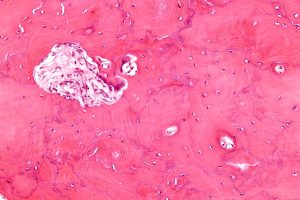An X-Ray Tech’s Quick Reference Guide to Bone Cancers

There are several bone cancer types with varying incidence. They include both primary neoplasms as well as bone metastases. Primary neoplasms (new and abnormal growth of tissue) of the bone, such as osteosarcoma and multiple myeloma, are less common compared to secondary bone metastases (spread of a primary tumor to the bone from another site in the body).




